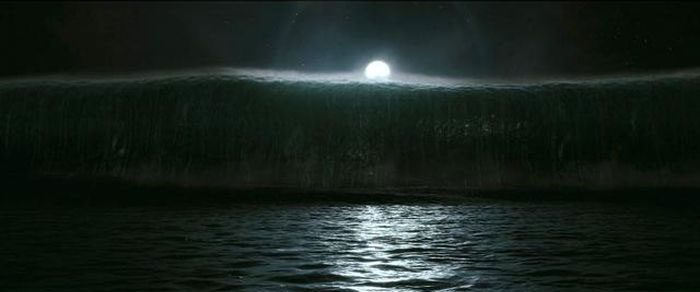Researchers have reported the observation of a rogue wave, also known as a killer wave, off the coast of Vancouver, measuring 17.6 meters high—three times the height of surrounding waves.
The wave was recorded in November 2020, but the study confirming its height was only published on February 2. According to Johannes Gemmrich, a leading expert on rogue waves at the University of Victoria, only a few rogue waves have been directly observed, and none have reached such a significant height. The chances of a similar wave occurring are about one in 1,300 years.

MarineLabs buoy off the coast of Ucluelet, British Columbia, recorded the record rogue wave. (Photo: MarineLabs).
Rogue waves are terrifying phenomena that appear unexpectedly. “They resemble a four-story building rising abruptly from the water, with a large crest and a deep trough at the front,” described Scott Beatty, the CEO of MarineLabs, the company operating the wave-measuring buoy. Rogue waves are typically more than twice the height of surrounding waves and are extremely difficult to predict. They can come suddenly from directions different than the prevailing winds and waves, according to the National Oceanic and Atmospheric Administration (NOAA).
The first documented rogue wave, named Draupner, occurred in 1995 off the coast of Norway. It measured 25.6 meters while the surrounding waves were only 12 meters high. The wave recorded in November 2020 was 17.6 meters high, three times the height of the surrounding waves (6 meters). The measurements were calculated through the MarineLabs buoy, located about 7 kilometers from the coast of Ucluelet, British Columbia.
Such waves can pose a significant threat to maritime activities and communities due to their power and unpredictability. Because rogue waves appear suddenly, operators of vessels are often caught off guard without time to alter their course or respond appropriately, according to Gemmrich.
Gemmrich emphasized that a common misconception is that rogue waves are often confused with tsunamis. Although both are large waves, their origins are entirely different. Rogue waves are generated by wind and are very rare, whereas tsunamis are typically caused by underwater earthquakes or volcanic eruptions.
Coastal communities are particularly vulnerable to rogue waves. According to Gemmrich, anywhere near the ocean can experience rogue waves, although areas with strong ocean currents are at higher risk. For Vancouver Island, there have been no reports of damage from rogue waves as the waves occurred too far offshore. However, rogue waves can be dangerous if they originate closer to shore. To ensure safety in the future, the scientific community is actively researching and forecasting to mitigate damage to maritime activities and residents. MarineLabs currently has a system of 26 buoys deployed in the waters around North America and hopes to double that number by the end of this year.

Killer waves can reach heights of 20-30 meters and appear suddenly.
A recent rogue wave struck a cruise ship traveling from Antarctica to Argentina, resulting in one passenger’s death and injuries to four others.
According to AFP news agency, on the night of November 29, an unusual large wave hit the Viking Polaris cruise ship as it was navigating through the Drake Passage in the Southern Ocean towards Ushuaia—a port in Argentina known for Antarctic excursions.
It is reported that the immense force of the wall of water threw passengers and shattered several exterior windows, flooding some rooms and causing additional structural damage. A 62-year-old American woman, Sheri Zhu, died from injuries caused by shattered glass, while four other passengers were injured but in non-life-threatening condition, according to ABC News Australia.
“The wave came crashing in and literally poured through the windows and flooded these rooms. It not only flooded the rooms but also broke down the walls,” Tom Trusdale, a passenger on the Viking Polaris during the incident, told ABC News.
Viking, the travel company that owns the Viking Polaris cruise ship, reported that the tragic event was caused by a “rogue wave.” Upcoming excursions on the Viking Polaris have been canceled until the vessel can be fully repaired and an appropriate investigation into what occurred is conducted.
What is a rogue wave? Rogue waves, or killer waves, are a type of wave that unexpectedly appears at sea, towering over the average wave height in a specific area and time, as defined by the National Oceanic and Atmospheric Administration. With heights potentially reaching 20-30 meters, rogue waves are an unpredictable hazard even for large vessels, as these massive walls of water seemingly arise from nowhere with no warning. |


















































